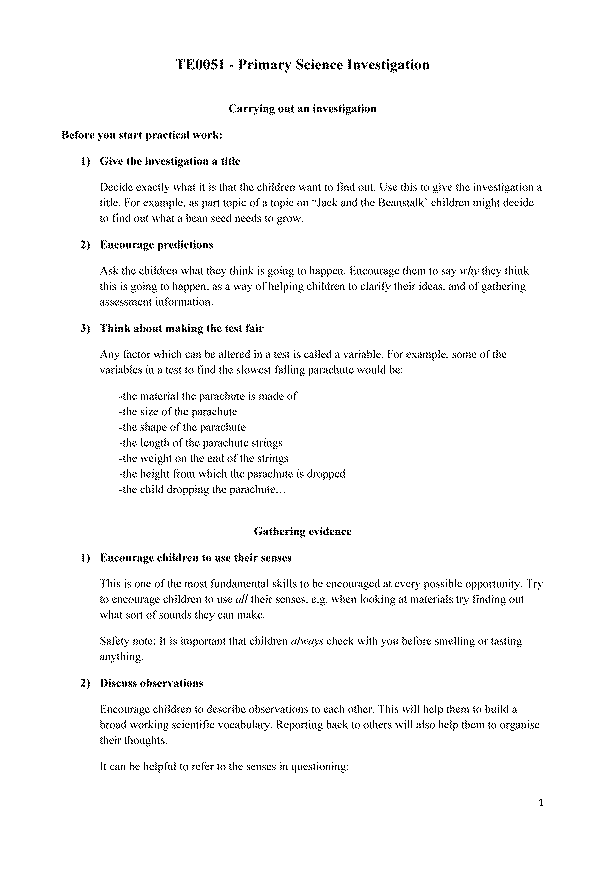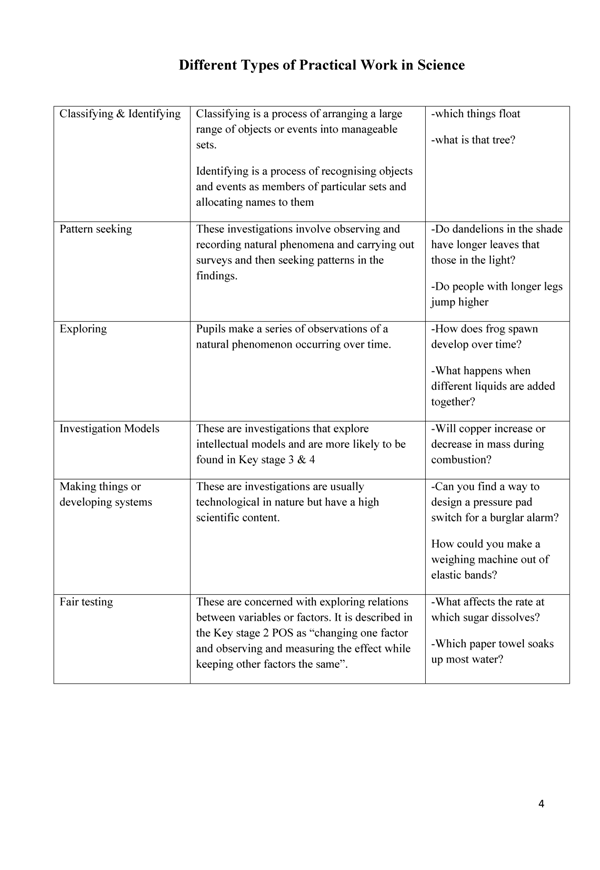Which material makes a good parachute
Lesson idea. A brief explanation of a simple investigation in to parachutes and air resistance followed by some ideas for a possible investigation and a description of how to make a simple parachute.
Teaching approach. This activity supports a number of learning types:
- small group work(ta) - investigation conducted by small groups reporting back to the class.
- whole class(ta) dialogue(ta) - discussion of each situation open-ended questions(ta) – why did this happen? what do you think causes this movement?
- peer assessment(ta) – do peers agree?
- project work – linked in with the rest of the activities in this OER, topic work in design and technology, literacy, numeracy
- inquiry(ta)-based learning – initial presentation to the class can be framed as a problem for them to solve; co-enquiry – children working collaboratively
- arguing and reasoning(ta) – persuading each other about their explanations.
- exploring ideas – developing understanding of key scientific principles.
(edit)
| Resource details | |
| Title | Which material makes a good parachute? |
| Topic | [[Topics/Force|Force]] |
| Teaching approach | [[Teaching Approaches/Assessment|Assessment]], [[Teaching Approaches/Dialogue|Dialogue]], [[Teaching Approaches/Questioning|Questioning]], [[Teaching Approaches/Whole class|Whole class]], [[Teaching Approaches/Group work|Group work]], [[Teaching Approaches/Inquiry|Inquiry]], [[Teaching Approaches/Reasoning|Reasoning]] Help must be enlisted from another adult as supervising 30 primary pupils when balanced at the top of the wall bars is difficult and dangerous. If the school has appropriate technology]]Property "Teaching approach" (as page type) with input value "A discussion must take place as to the accuracy of human timings. </br></br>For upper KS2 it is suggested that one variable is defined as the independent variable" contains invalid characters or is incomplete and therefore can cause unexpected results during a query or annotation process.[[Category:a discussion must take place as to the accuracy of human timings. For upper KS2 it is suggested that one variable is defined as the independent variable]]Property "Teaching approach" (as page type) with input value "The size of the parachute or the material from which it is made. This could follow on from the investigation outlined in the activity sheets.</br></br>This activity supports a number of learning types:</br></br>Small group work - Investigation conducted by small groups reporting back to the class </br>Whole class dialogue - Discussion of each situation Open-ended questions – Why did this happen? What do you think causes this movement? </br>Peer assessment – do peers agree?Project work – linked in with the rest of the activities in this OER" contains invalid characters or is incomplete and therefore can cause unexpected results during a query or annotation process.[[Category:the size of the parachute or the material from which it is made. This could follow on from the investigation outlined in the activity sheets. This activity supports a number of learning types: Small group work - Investigation conducted by small groups reporting back to the class Whole class dialogue - Discussion of each situation Open-ended questions – Why did this happen? What do you think causes this movement? Peer assessment – do peers agree?Project work – linked in with the rest of the activities in this OER]]Property "Teaching approach" (as page type) with input value "Numeracy…</br>Enquiry-based learning – initial presentation to the class can be framed as a problem for them to solve.Co-enquiry – children working collaboratively</br>Arguing and reasoning – persuading each other about their explanations </br>Exploring ideas – developing understanding of key scientific principles" contains invalid characters or is incomplete and therefore can cause unexpected results during a query or annotation process.[[Category:numeracy… Enquiry-based learning – initial presentation to the class can be framed as a problem for them to solve.Co-enquiry – children working collaboratively Arguing and reasoning – persuading each other about their explanations Exploring ideas – developing understanding of key scientific principles]] |
| Learning Objectives |
|
| Subject | [[Resources/Science|Science]] |
| Age of students / grade | [[Resources/Primary|Primary]]
|
| Related ORBIT Wiki Resources | [[]] |
| Files and resources to view and download |
|




